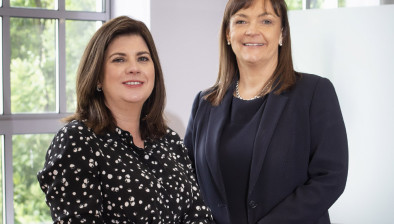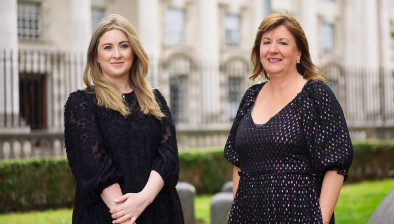Court of Appeal: Order dismissing application for family reunification in ‘actually polygamous’ marriage affirmed

Sean Smith
The Court of Appeal has affirmed the judgment of the High Court refusing family reunification where the applicant’s marriage was, at the time of contracting, actually polygamous.

About this case:
- Citation:[2020] IECA 241
- Judgment:
- Court:Court of Appeal
- Judge:Ms Justice Aileen Donnelly
The ruling in I.H. (Afghanistan) v. Minister for Justice and Equality [2020] IECA 241 marks the latest occasion on which the courts have tackled the status of polygamous families in Irish law.
Background
The applicant was born in Afghanistan and married his first wife, Ms. H, in 2001. In August 2012, the applicant’s first wife, Ms. H., died. He subsequently married another woman, Ms. S, in 2013. The High Court noted critically “that many of the features prevalent in the marriages-of-convenience industry” were present in this second marriage, which ended soon after. In October 2013, the applicant married for a third time in Pakistan. It was common case that this marriage was permissible under the lex loci celebrationis (law of the place of celebration). He applied for asylum here in 2008 and was finally declared a refugee in 2016 after lengthy proceedings.
The appellant made an application in December 2016 for family reunification (of a group of family members including the applicant’s third wife) under s.18 of the Refugee Act 1996. The International Protection Office (IPO) refused this application in 2018. Following the 2016 application, but before the negative decision of the IPO, the applicant divorced his second wife. At the conclusion of judicial review proceedings brought in the High Court, Mr Justice Richard Humphreys dismissed the applicant’s challenge to this decision. This appeal followed.
Court of Appeal
Delivering judgement, Ms Justice Aileen Donnelly unveiled the crux of the case: whether the appellant’s third wife was a “spouse” sheltered by s.18 of the Refugee Act 1996. As became clear in the decision, the answer to this question lay largely in considering the continuing vitality of a recent Supreme Court decision, H.A.H. v. S.A.A. [2017] IESC. In doing so, Ms Justice Donnelly also had to consider both the reach of public policy in this area and the role of the judicial branch in identifying such policy’s content.
Counsel for the appellant first relied on the Family Reunification Directive 2003/86. It was submitted that, according to the Directive, a man who has more than one wife can be joined by one of his wives. The Court noted early on that this has not been adopted in Ireland. Counsel then opened Hassan v. Minister for Justice, Equality and Law Reform [2013] IESC 8 and Hamza v. Minister for Justice, Equality and Law Reform [2013] IESC 9 as relevant authorities. Reference was made to the test in Hamza, and approved in Hassan, according to which “Irish law will recognise a marriage contracted in a foreign country which complies with the requirements of the laws of that country […] unless it conflicts with fundamental requirements relating to validity based on the domicile of the parties or public policy in our law, in particular capacity to marry.”
It was the position of counsel that the applicant and his wife met this key limb of the Hamza test. However, counsel also drew on dicta from the lower court in Hassan to the effect that the Minister need only be satisfied that “the refugee and the spouse are married and that the marriage is subsisting at the date of the application” and not be concerned with validity in Irish law or documentary evidence of the marriage.
Much of the parties’ debate focused on the recent decision of the Supreme Court in H.A.H. Counsel for the appellant cited the case as authority for the position that a potentially polygamous marriage is valid at its inception and this is not altered even if it subsequently becomes de facto polygamous. Secondly, because the case arose under another piece of legislation (s.29 of the Family Law Act 1995), the Court had no occasion to explore the context impacting the exercise of ministerial discretion in a determination arising under s.18. Finally, a correct reading both of s.18 and H.A.H. required public policy considerations to be invoked only where necessary and only once the Minister was satisfied that the parties were in fact married. In short, its deployment was ‘confined to the refusal of permission and not to the denial of recognition.’
Answering these submissions, counsel for the Minister argued that in order for a person to be a spouse within the meaning of the 1996 Act, the marriage had to be in accordance with the law of the country where it was celebrated and be a marriage recognisable in the State. However, a straightforward application of H.A.H was fatal to the applicant’s claim, for it was settled law according to that decision that a second or subsequent marriage entered into while a first marriage was in being cannot be recognised as valid in Irish law.
In giving her determination, Ms Justice Donnelly first homed in on to the introductory lines of H.A.H, where Ms Justice Iseult O’Malley noted that the court was asked to give “full consideration to the legal consequences within this State of a polygamous marriage entered into in another country”. The Court referred to Ms Justice O’Malley’s extensive discussion of relevant EU and ECHR law, and her “comprehensive examination” of the groundings of public policy in this area. The Court next recalled the central holding of H.A.H, namely that a marriage should not be denied recognition merely because it is potentially polygamous.
Confronting the applicant’s argument that subsequent comments by Ms Justice O’Malley to the effect that “recognition of an actually polygamous marriage would be contrary to a fundamental constitutional principle and therefore contrary to public policy” were obiter dicta, the judge found that this was a correct statement of the law in the instant case. Pointedly, the judge concluded that an actually polygamous marriage at the time of its celebration does not become valid simply because the parties “behave as if they were in a monogamous marriage”.
Unpacking the Court’s conclusion, Ms Justice Donnelly found that the word “spouse” in s.18(3) ought to be given its ordinary and natural meaning, that is “spouse as understood (and recognised) by Irish law”. Public policy enters the equation when the competent decision- maker must decide which marriages are recognised by Irish law. Although the Court emphasised that “courts have to deal with the issues of public policy that are raised” in the absence of legislative action in this area, reference was made to the important ‘inquisitorial’ function of the Minister in each case. However, the Court also answered the appellant’s argument that the invocation of public policy was appropriate only when harm was “substantially incontestable”, ruling that there was no room for the Minister to embark an reassessment of public policy on a case-by case basis given the clarity of the Court’s teaching in H.A.H.
The applicant’s remaining arguments were quickly dispatched. Addressing the contention that the Minister’s blanket exclusion was discriminatory under the ECHR and the Constitution, the judge concluded stating “neither the Constitution nor Article 12 of the ECHR guarantee the right to enter into polygamous marriages”.
Conclusion
The Court concluded that no new developments in Irish constitutional law, EU law, or international human rights/refugee treaties permitted the court to depart from the ‘authoritative’ public policy assessment laid out in H.A.H. The reference in the relevant provisions of s.18 of the Refugee Act 1996 to “spouse” could not therefore include a spouse who entered into an actually polygamous marriage.
As a result, the High Court’s judgement was upheld and the appeal dismissed. The Court left open the possibility of family reunification under the Irish Humanitarian Admission Programme but expressed no views thereon.












